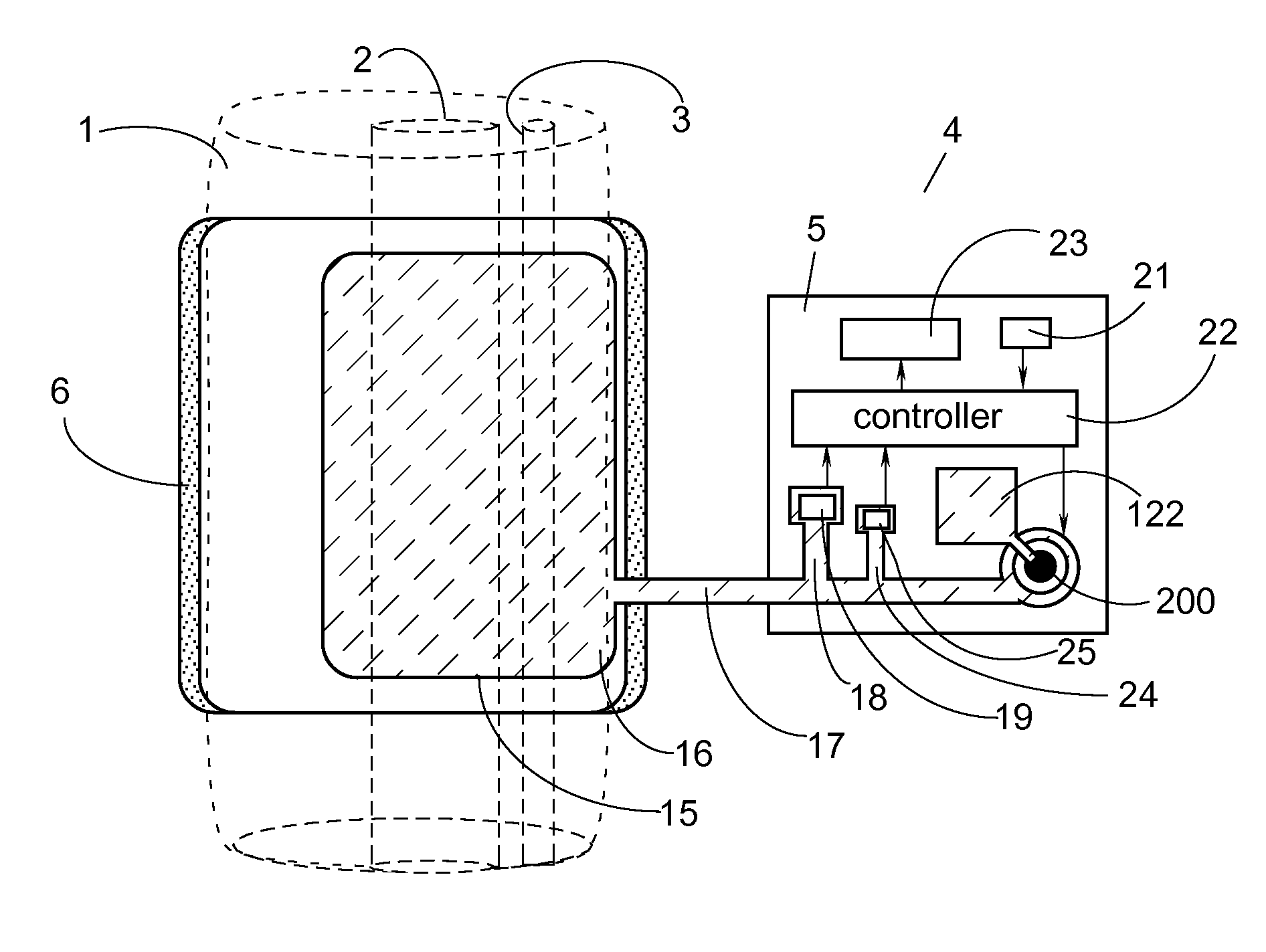Arterial blood pressure monitor with a liquid filled cuff
a blood pressure monitor and liquid filling technology, applied in the field of noninvasive monitoring of arterial blood pressure, can solve the problems of inability to accurately and consistently determine the systolic and diastolic pressure, the oscillometric method sometimes does not produce blood pressure values that agree, and the mechanical coupling between the blood-filled artery and the lfc of the dual-chamber cuff is improved, and the positioning of the cuff is less critical.
- Summary
- Abstract
- Description
- Claims
- Application Information
AI Technical Summary
Benefits of technology
Problems solved by technology
Method used
Image
Examples
first embodiment
[0042]FIG. 2 illustrates a blood pressure monitor according to the present invention, which includes a second chamber (bladder) LFC 99 positioned between the AFC 98 (part of the pressurizing device) and the patient limb 1 or digit. Both chambers are supported by the cuff 6, which may be made of a thin pliant fabric or plastic material. The LFC need not be the same size as the AFC. In some cases, especially when used with a hydrophone (see below) it may be smaller, but not larger. The cuff wraps around the limb or digit and may be locked in place by a conventional fastener 120, for example VELCRO. The bleed valve 39 (a pressure varying device) may pneumatically connect the AFC 98 to the atmosphere as determined by the controller 22. Initially, on command from the controller 22, the bleed valve 39 closes and the air pump 20 inflates AFC 98 by pumping air in. The pump serves as part of the pressurization device. The air pressure is measured by the pressure sensor 19 which is coupled to...
second embodiment
[0046]FIG. 3 is similar to FIG. 2, except the LFC 15 is not an intermediate medium between the artery and the pressure sensor. Here, the AFC is not employed at all. The LFC 15 is attached by a tube 17 and extensions 18 and 24 to the liquid pressure sensor 19 and hydrophone 25, respectively. A reservoir 122 is connected to the liquid pump 200, which, in turn, is connected to the tube 17, thus forming a closed circuit. Liquid 16 can be pumped from reservoir 122 to LFC 15 and vice versa as directed by controller 22. The LFC 15, when liquid 16 is pumped into it, compresses the artery 3 against the supporting bone 2. This arrangement produces even better signal-to-noise ratio as there is no intermediate air-filled bladder between the hydrophone 25 and the artery 3. Liquid in the LFC 15 may be pressurized by any known liquid pump of a peristaltic or piston type that may be driven by an electric motor. Alternatively, an electrically-activated polymer (EAP) may serve as a pressurizing devic...
PUM
 Login to View More
Login to View More Abstract
Description
Claims
Application Information
 Login to View More
Login to View More - R&D
- Intellectual Property
- Life Sciences
- Materials
- Tech Scout
- Unparalleled Data Quality
- Higher Quality Content
- 60% Fewer Hallucinations
Browse by: Latest US Patents, China's latest patents, Technical Efficacy Thesaurus, Application Domain, Technology Topic, Popular Technical Reports.
© 2025 PatSnap. All rights reserved.Legal|Privacy policy|Modern Slavery Act Transparency Statement|Sitemap|About US| Contact US: help@patsnap.com



